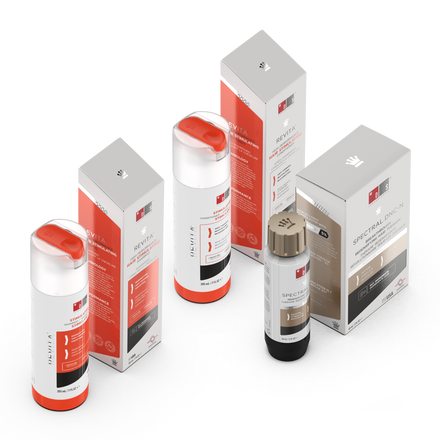Dihydrotestosterone, or DHT, is a derivative of the male sex hormone, testosterone. It is responsible for androgenetic alopecia- a common form of hair loss that occurs in a well-defined pattern above the temples- in those who are genetically susceptible to hair loss. Eventually, the hairline recedes and forms a distinct “M” shape, with hair thinning at the crown as well.
Is DHT Hair Loss Reversible?
Posted on by Leo Smirnov
What is DHT and What Does It Do?
But it doesn’t just plague men; it can also cause hair loss in women and even some children. You see, women also have the hormone testosterone, albeit in much smaller quantities, and as with men, it’s also one of the main reasons why some women experience pattern baldness.
The process happens when testosterone is converted to DHT by a specific enzyme. Once converted, the DHT binds to the receptors of our hair follicles and prevent them from getting the necessary proteins, minerals and vitamins they need. This causes the follicles to shrink, preventing them from staying healthy, thus causing baldness. Many factors can cause this to happen and they include, but are not limited to diet, childbirth, sickness and medications. But is this kind of hair loss reversible?
DHT Hair Loss Numbers
Before we answer that question, let’s get into some DHT numbers. Androgenetic alopecia, most often caused by DHT, affects millions in the United States-approximately 80 million people are plagued by this medical condition. Although the onset of this kind of hair loss happens later in life for both sexes, there are cases where young adults have experienced it and as early as 21-years old. By age 50, about 85% of men and 50% of women will experience some degree of baldness.
LEARN MORE ABOUT THESE DHT BLOCKING SHAMPOOS
Can DHT Hair Loss Be Reversed?
Now that you understand the kind of hair loss, what causes it and how many people suffer from it, we can finally get to whether it’s reversible or not. The truth of the matter is that all this type of hair loss is caused by a blocker. So, it would stand to reason that if the blocker was removed, then hair would thrive again. But is it actually possible? Of course, it is! And here’s how:
- Oral Medication
When it comes to androgenetic alopecia, there are many go-to oral medications available which can be prescribed by your dermatologist. They usually work by inhibiting the enzyme responsible for hair loss.
- Topical Medication
Topical products like Spectral DNC-N and Spectral DNC-S are available online and are great alternatives if you’re afraid of the side effects that can come with some oral medications. The first, Spectral DNC-N, contains a powerful alternative for minoxidil and also works to reduce inflammation in the follicles. Spectral DNS-S, on the other hand, was designed to help men and women who are in the latter stages of hair thinning.
- DHT blocking shampoos
DHT blocking shampoos are one of the most turned-to hair loss treatments that exist. They can be easily incorporated into any lifestyle and more than a few of them have yielded excellent results. These shampoos work by removing the DHT in the scalp and nourishing the follicles to coax them into re-growing. The Revita shampoo is a great example of a shampoo that not only stimulates hair growth, but it does so at a speedy rate. It gives support to newly growing hair, as well the hair that has already thinned out.
- Herbal Supplements
When there’s something wrong with the body, most people prefer to take the natural route, if available, in order to cure their conditions. In this case, there are more than a few herbs tuned supplements that can work to activate follicular growth and improve the overall health of the hair and scalp. These foods and supplements include vitamin B6, ginseng, zinc, rosemary, pumpkin seed and chamomile.
Revita also has some tablets that revitalize the hair. It has zinc, biotin, melatonin, vitamin D and some isoflavones that help with inflammation. All these ingredients work together to create a supplement that facilitates hair growth, takes care of inflammation and shedding and cleanses.
- Plasma injections
Also called platelet-rich plasma injections, or PRP, this treatment uses the blood of the hair loss patient, from which growth factors are extracted. These growth factors are then injected back into the scalp in the area where the hair loss is occurring. Experts believe that is it a promising option, although studies are still being conducted.
In addition to these methods, smoking, the use of dyes and bleaching and extremely hot showers should be stopped. You’ll want to place as little stress on your hair and yourself as possible and doing the aforementioned things just will not help. You can up your consumption of natural DHT blockers by eating vegetables, taking more antioxidants and alkalizing your body. Doing these things consistently and with the advice of a medical professional should work to block DHT and allow your hair to grow back.










